Choosing the right yoga mat is essential for a comfortable and effective practice. Among premium options, Lululemon yoga mats and Alo yoga mats stand out for their quality, design, and price points. Both brands offer mats that appeal to yoga enthusiasts looking for durability, grip, and style.
Lululemon and Alo: Two Popular Choices
Lululemon’s mats typically range around $80-$130. They feature proprietary materials like the “Everlux” fabric, which balances softness and moisture-wicking. Alo mats, priced similarly between $70-$120, focus on sustainability and sleek design, using materials such as microfiber and latex-free foam.
Both brands receive high evaluations for comfort and grip, but subtle differences make them appeal to different users. This article will explore these differences in detail to help you decide which yoga mat suits your needs best.
Material & Construction
When comparing Lululemon and Alo custom yoga mats, understanding their material composition and build quality is essential for choosing the best option.
Lululemon Yoga Mat Materials
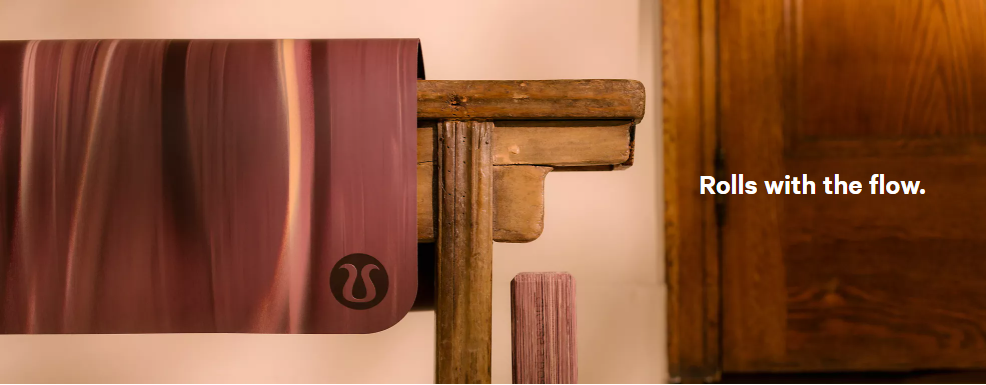
Lululemon’s Reversible Mat features a natural rubber base combined with a polyurethane top layer. This blend offers excellent grip and cushioning, supporting intense yoga sessions without slipping. The natural rubber ensures strong durability, while the polyurethane surface provides a soft, sweat-resistant texture, ideal for hot yoga or vigorous flows.
Alo Yoga Mat Materials
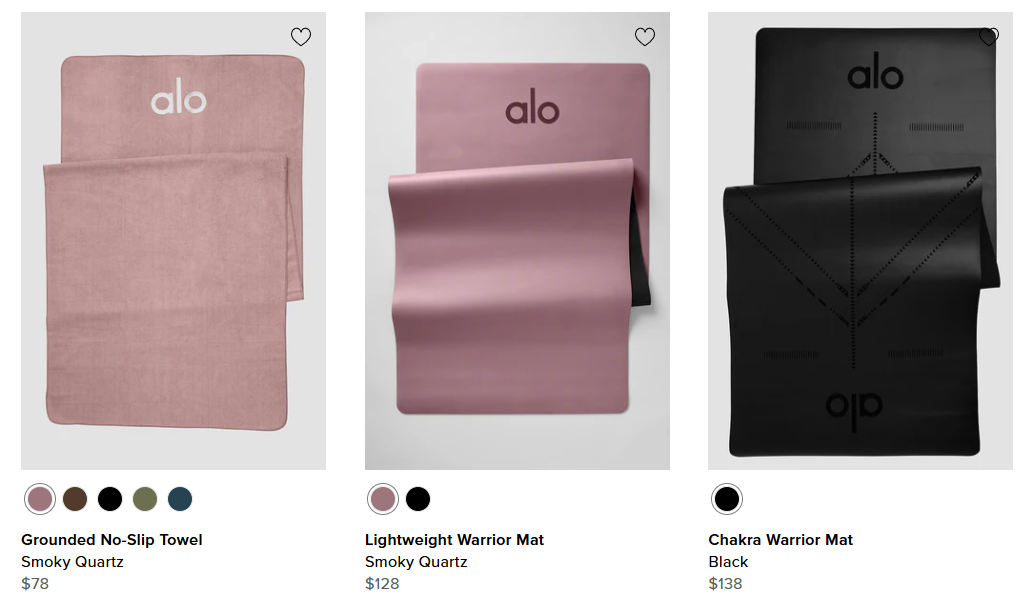
Alo Yoga provides mats made from either 100% eco-PVC or natural rubber. The eco-PVC mats offer a lightweight and smooth surface with moderate cushioning, while the natural rubber versions deliver enhanced durability and grip. Both choices focus on eco-friendliness, though the natural rubber mats are generally preferred for their biodegradable qualities.
Durability and Eco-Friendliness Comparison
- Durability: Lululemon’s combination of natural rubber and polyurethane creates a resilient mat that maintains its integrity over time, even with frequent practice. Alo’s natural rubber yoga mats are similarly durable, but their eco-PVC options may wear out faster.
- Eco-Friendliness: Lululemon prioritizes sustainable sourcing for its natural rubber, while Alo offers eco-PVC mats that balance performance with environmental concerns. Natural rubber mats from both brands are more biodegradable compared to synthetic PVC alternatives.
By focusing on the materials, Lululemon leans towards a high-performance, versatile mat with strong grip and longevity. Alo offers more variety with eco-PVC options but stands out more for practitioners prioritizing natural rubber’s environmental benefits.
Expert Opinion:
“Based on my 15 years of teaching, I know the material of a yoga mat makes or breaks its performance. From my experience, I appreciate the Lululemon mat’s polyurethane-rubber mix. It keeps a steady grip for the entire class, even when you get sweaty. I find my students feel more secure in tough poses. They know their mat will not slip. Alo’s mats use natural rubber. This gives them an earthy feel that my students who care about the planet really like. I also tell my students that eco-PVC mats are kinder to the earth but may not last as long as natural materials. This is a key point I make when they are ready to buy their first quality mat.“
———— Sarah Chen , Certified Yoga Instructor (RYT-500) and Studio Owner, 15+ years experience in Hatha and Vinyasa practices
Grip and Performance
When comparing the grip and overall performance of Lululemon yoga mats and Alo Yoga mats, several key factors come into play, particularly the surface material and how they handle different yoga styles.
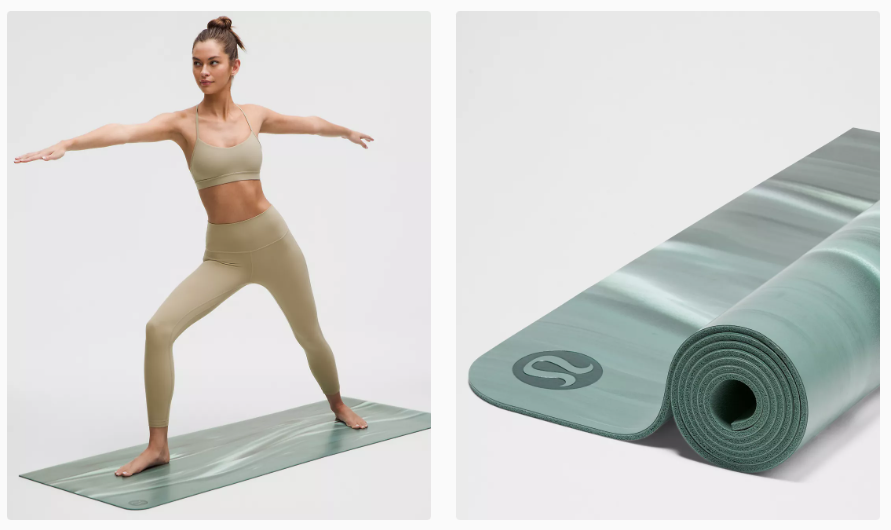
Grip Strength and Surface Material
- Lululemon Yoga Mat: Features a polyurethane top layer that provides an excellent wet grip. This makes it ideal for sweaty practices like power yoga or heated sessions. The mat’s slightly tacky surface helps prevent slipping even when perspiration builds up.
- Alo Yoga Mat: Known for its dry grip, Alo mats are favored by practitioners who prefer stability without a sticky feel. Their surfaces stay grippy during hot yoga but might not perform as well as Lululemon mats when hands are very sweaty.
Performance in Different Yoga Styles
Vinyasa and Power Yoga: Lululemon’s superior wet grip makes it the better choice for fast flows and intense workouts where sweat is abundant. Users often find enhanced stability and confidence with this mat.
Hot Yoga: Both mats are designed to handle heat, but Alo Yoga mats shine in dry grip during hot yoga, offering long-lasting traction without feeling slippery.
Yin and Restorative Yoga: Grip is less critical here, but both mats offer enough cushioning and stability for gentle practices.
Summary
For sweaty, dynamic yoga sessions, Lululemon mats excel due to their polyurethane surface and wet grip performance.
For dry grip and comfort during hot yoga, Alo Yoga mats are a popular and reliable option.
Choosing between the two ultimately depends on your sweat levels and preferred yoga style.
Comfort and Thickness
When comparing Lululemon yoga mats and Alo yoga mats, comfort and thickness are key factors that influence user experience and yoga performance.
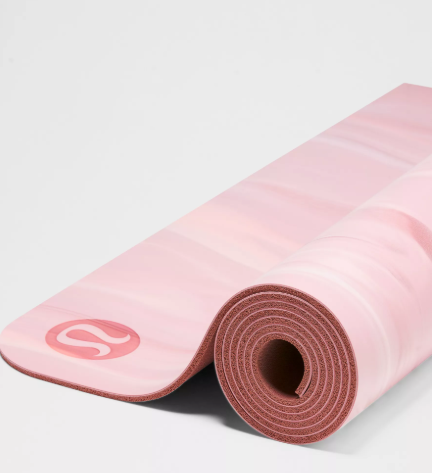
Thickness and Cushioning Comparison
Alo yoga mats generally offer a slightly thicker and plusher cushioning. Their mats typically measure around 5mm in thickness, providing a soft, cushy feel underfoot. This extra padding can be beneficial for those who prioritize comfort, especially during longer sessions or restorative poses.
In contrast, Lululemon yoga mats have a more balanced thickness, usually around 4.5mm. They deliver firm support that cushions joints without compromising stability. This quality helps maintain proper alignment during standing or balance-heavy poses.
Comfort for Different Yoga Levels
- Beginners: Alo’s thicker mats provide a comfortable landing for new practitioners still building strength and flexibility. The softer surface reduces pressure on knees and wrists, encouraging longer practice sessions without discomfort.
- Advanced Yogis: Lululemon mats strike a great balance for experienced yogis who need both cushioning and firm support. Their mats prevent sinking too deep, which helps maintain proper posture in challenging poses.
Practical Considerations
- Alo mats come at a slightly higher price point, reflecting their premium cushioning and plush texture.
- Lululemon mats offer great value for those seeking durability combined with moderate comfort.
In summary, Alo yoga mats excel in plush comfort and thickness, ideal for cozy, low-impact practices. Lululemon mats offer firmer joint support with enough cushioning to satisfy most yogis, especially those focused on alignment and stability.
Design and Aesthetic Appeal
When choosing between the Lululemon yoga mat and the Alo Yoga mat, design and aesthetic appeal play a key role. Both brands offer stylish options but with distinct approaches that cater to different tastes.
Alo Yoga’s Minimal and Fashion-Forward Designs
Alo Yoga mats emphasize simplicity and modern elegance. Their mats often feature solid, muted tones or subtle textures. This minimalistic design appeals to those who prefer a sleek, understated look. Alo’s aesthetic aligns well with their overall brand, which focuses on fashion-forward, versatile activewear.
Lululemon’s Reversible Patterns and Color Variety
Lululemon stands out by providing mats with reversible designs, offering two pattern or color options in one mat. This doubles your style flexibility, making it easier to match various moods or studio environments. Their color palette ranges widely—from vibrant hues to calm earth tones—giving users plenty of choices to express their personality.
Which Mat Fits Your Personal Style and Studio Vibe?
If you want a mat that blends effortlessly with trendy, minimalist gymwear and a clean studio look, Alo Yoga’s design might be the perfect match. On the other hand, if you enjoy switching up your style with colorful alternatives and patterned options, Lululemon’s reversible mats offer more versatility. Consider your wardrobe and preferred workout setting when deciding which aesthetic suits you best.
Price and Value Comparison: Lululemon Yoga Mat vs Alo Yoga Mat
When comparing the price and value of Lululemon and Alo yoga mats, it’s important to consider both the cost and what each mat offers in terms of quality and durability.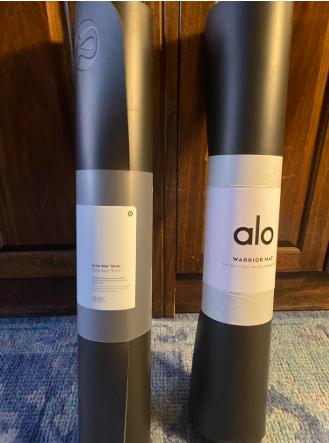
Price Range
- Lululemon Yoga Mat: Approximately $88 to $128
- Alo Yoga Mat: Approximately $100 to $150
Lululemon mats tend to be slightly more affordable at the entry-level, while Alo mats can reach a higher price point.
Value for the Price
- Lululemon offers excellent grip and cushioning, making their mats suitable for various yoga styles. The brand’s reputation for durable and high-performance mats justifies the mid-range price tag.
- Alo Yoga mats often focus on premium materials and luxurious textures, which can appeal to yoga enthusiasts seeking a softer feel and stylish design. Their higher prices reflect this enhanced material quality and trend-forward branding.
Is the Price Difference Worth It?
While Alo mats can cost up to $22 more than Lululemon, this premium might appeal to users valuing luxury aesthetics and ultra-soft surfaces. However, if you prioritize solid performance and durability at a slightly lower price, Lululemon provides strong value.
In summary, both brands offer quality mats with justified price points. Your choice depends on whether you favor affordability with good performance (Lululemon) or a premium feel with a fashion-forward edge (Alo).
Brand Philosophy & Extras
Lululemon’s fitness-oriented community focus
Lululemon centers its brand philosophy around building an active, fitness-driven community. The company emphasizes performance and quality in its yoga mats, appealing mainly to serious practitioners. Lululemon supports local events, classes, and ambassadors that foster engagement in an athletic lifestyle. Their mats typically reflect this commitment, designed for durability and grip suitable for intense workouts. Pricing usually ranges from $68 to $98, positioning the mats as premium but justified by product longevity and community value.
Alo’s wellness-lifestyle branding and celebrity appeal
Alo Yoga positions itself as a wellness lifestyle brand that blends athletic performance with stylish design. The brand attracts a broad audience through its fashion-forward products and strong celebrity endorsements. Alo’s yoga mats often feature sleek aesthetics and eco-friendly materials, appealing to consumers focused on both wellness and trendiness. Prices generally fall between $70 and $110, reflecting a balance of quality and brand prestige. This approach creates a lifestyle aura beyond just yoga equipment.
Packaging, customer service, and return policies
Both brands offer carefully designed packaging that enhances the unboxing experience, reinforcing their premium market position. Lululemon provides a 30-day return policy and responsive customer service aimed at resolving issues efficiently. Alo offers a similar return window but places additional emphasis on personalized customer support. The investment in packaging and service contributes to overall customer satisfaction and loyalty in both cases.
summary
I’ve spent a lot of time using both mats. My conclusion is that the best choice depends on your personal needs.
From my experience, I recommend the Lululemon mat if you sweat a lot during practice. It offers a fantastic, long-lasting grip that won’t slip. If you care more about comfort and style, I suggest the Alo mat. I think its soft, cushioned feel might be the better choice for you.
Both are great options that will last for years. My advice is to think about your practice style. Choose the mat that feels like the right fit for your routine.

